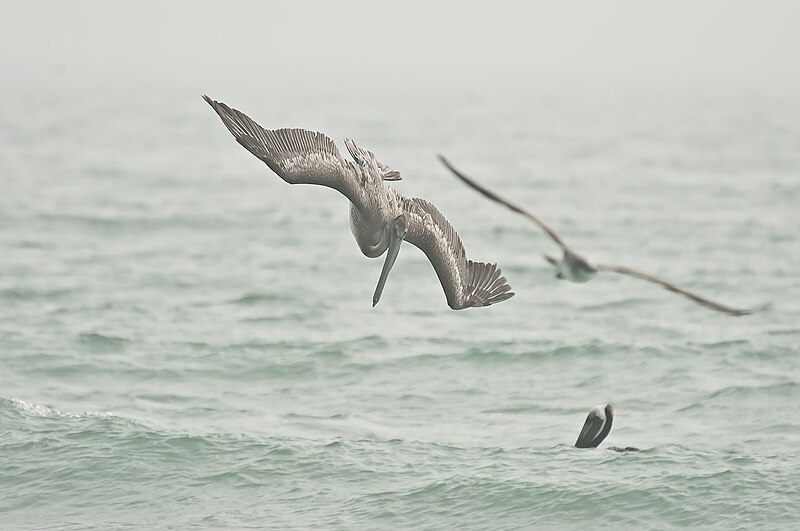.
Four pelicans went over the house,
Sculled their worn oars over the courtyard: I saw that ungainliness
Magnifies the idea of strength.
A lifting gale of sea-gulls followed them; slim yachts of the element,
Natural growths of the sky, no wonder
Light wings to leave the sea; but those grave weights toil, and are powerful,
And the wings torn with old storms remember
The cone that the oldest redwood dropped from, the tilting of continents,
The dinosaur’s day, the lift of new sea-lines.
The omnisecular spirit keeps the old with the new also.
Nothing at all has suffered erasure.
There is life not of our time. He calls ungainly bodies
As beautiful as the grace of horses.
He is weary of nothing; he watches air-planes; he watches pelicans.
Sculled their worn oars over the courtyard: I saw that ungainliness
Magnifies the idea of strength.
A lifting gale of sea-gulls followed them; slim yachts of the element,
Natural growths of the sky, no wonder
Light wings to leave the sea; but those grave weights toil, and are powerful,
And the wings torn with old storms remember
The cone that the oldest redwood dropped from, the tilting of continents,
The dinosaur’s day, the lift of new sea-lines.
The omnisecular spirit keeps the old with the new also.
Nothing at all has suffered erasure.
There is life not of our time. He calls ungainly bodies
As beautiful as the grace of horses.
He is weary of nothing; he watches air-planes; he watches pelicans.
Robinson Jeffers (1887-1962): Pelicans, November 1925, from American Poetry: A Miscellany, ed. Lewis Untermeyer, 1927
Pelican in a dive: photo by Coveredinsevindust, 23 March 2013
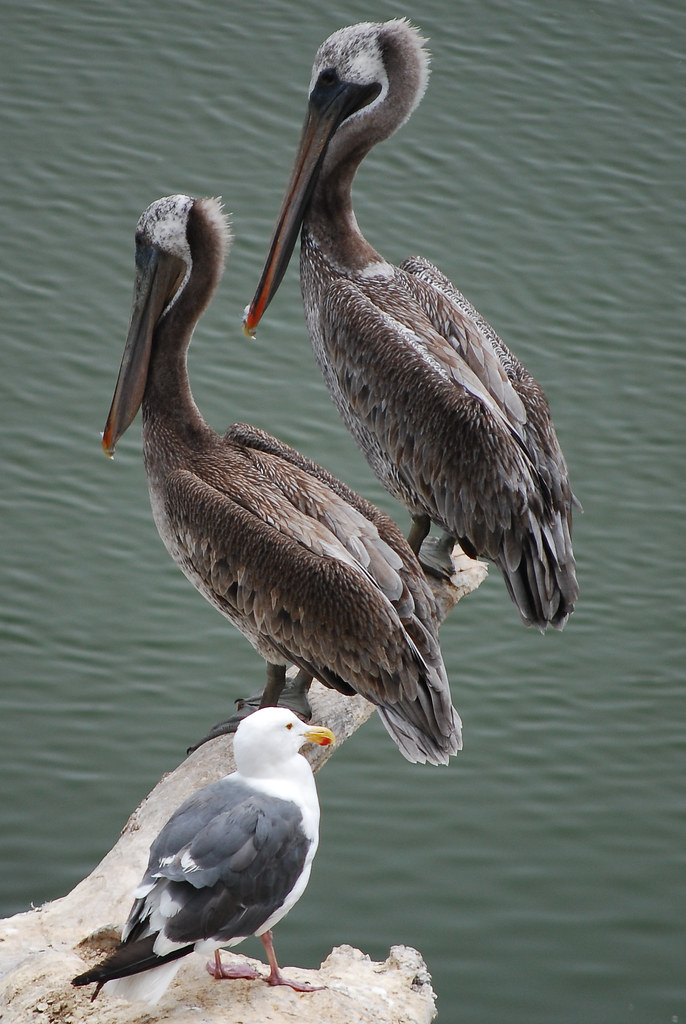
Brown Pelicans and seagull, UCSB Lagoon, Goleta, California: photo by Steve Voght, 16 August 2009
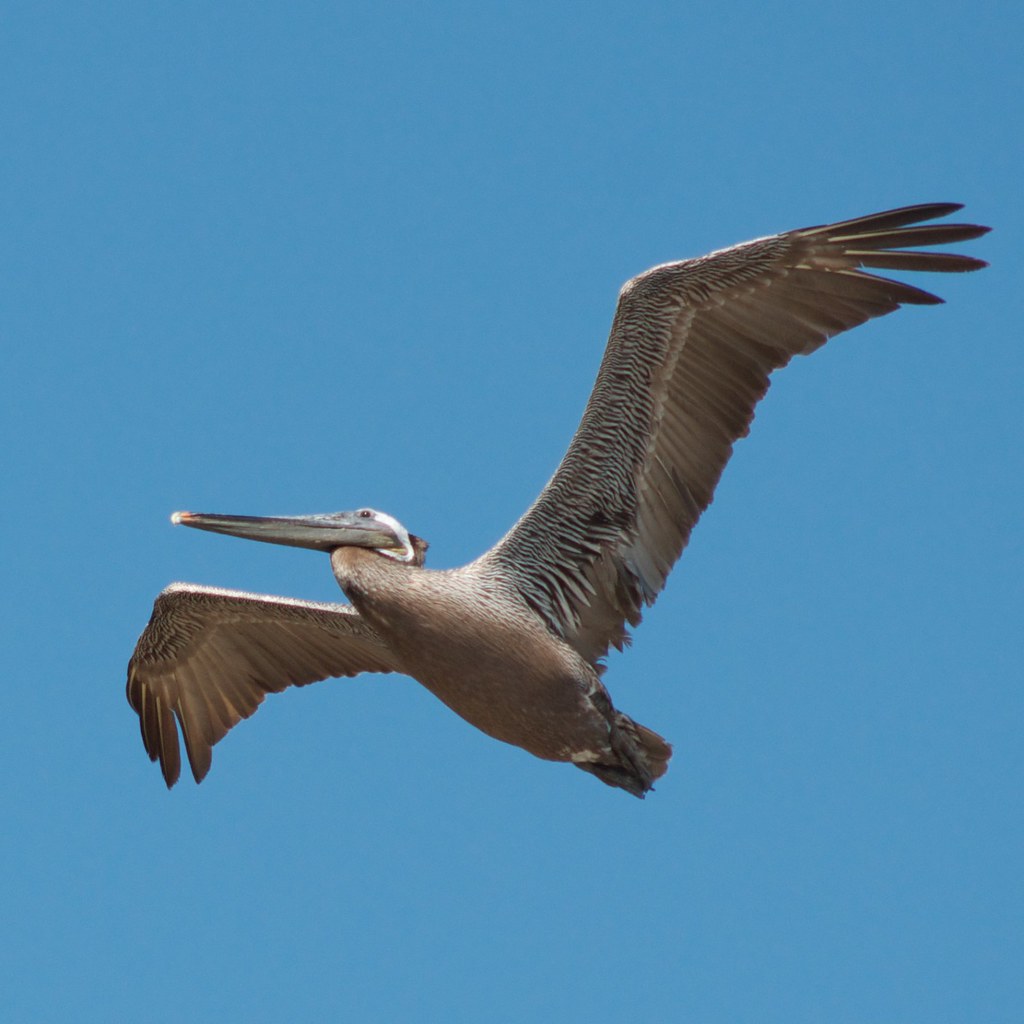
Brown Pelican, Goleta, California: photo by Jon Sullivan, 28 July 2013
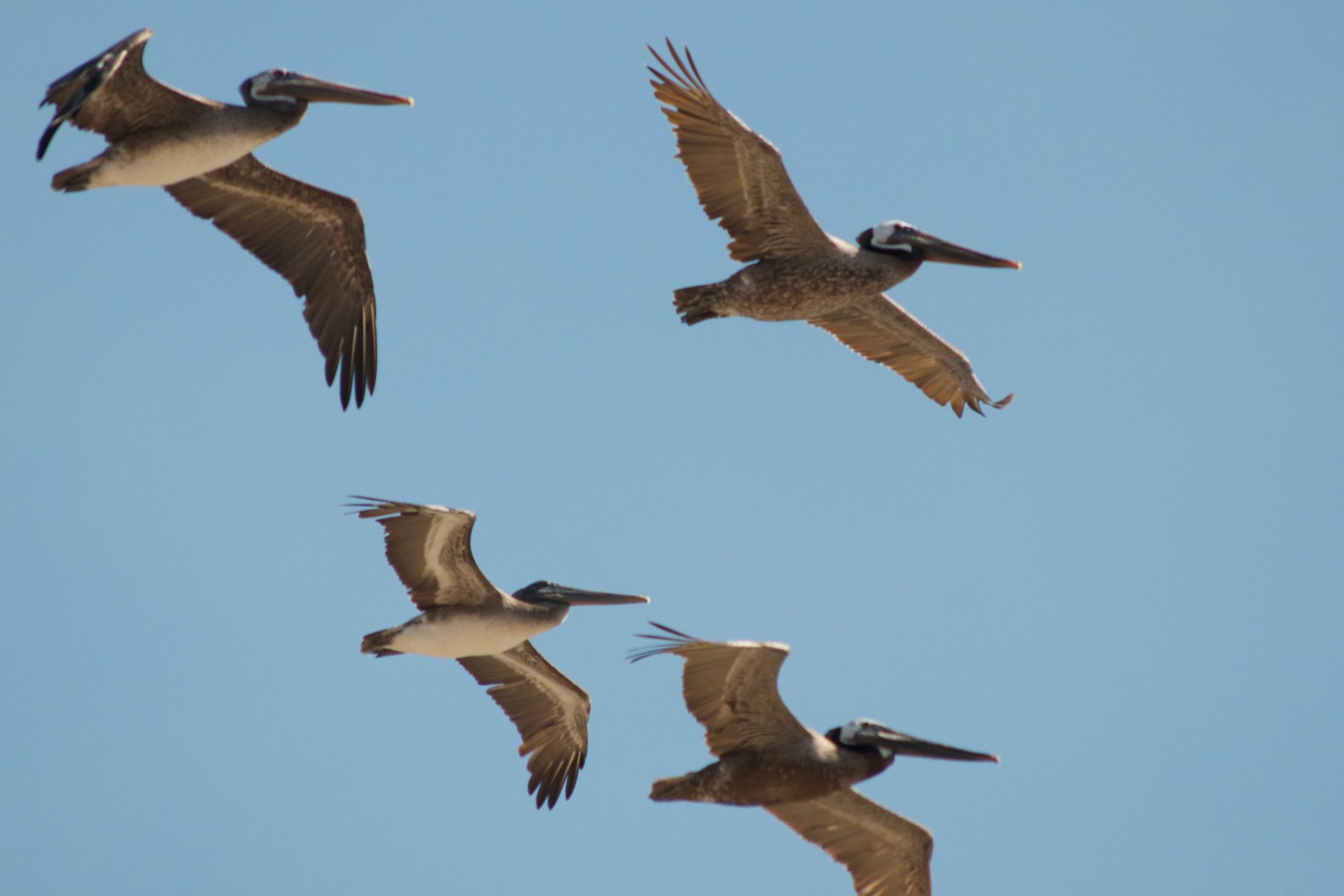
Brown Pelicans in flight, Goleta, California: photo by Jon Sullivan, 28 July 2013
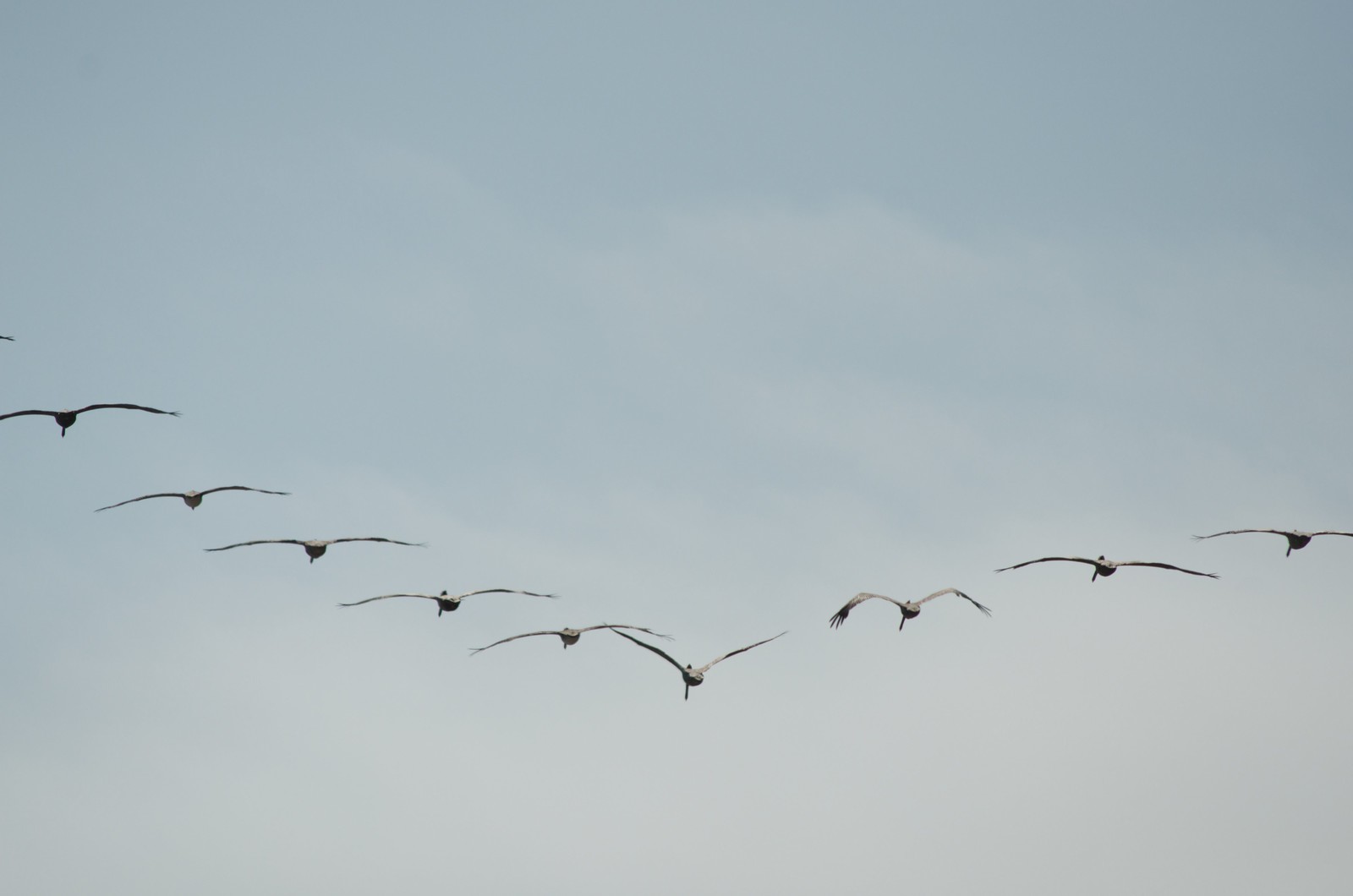
Pelicans in flight, Goleta, California: photo by Jon Sullivan, 28 July 2013
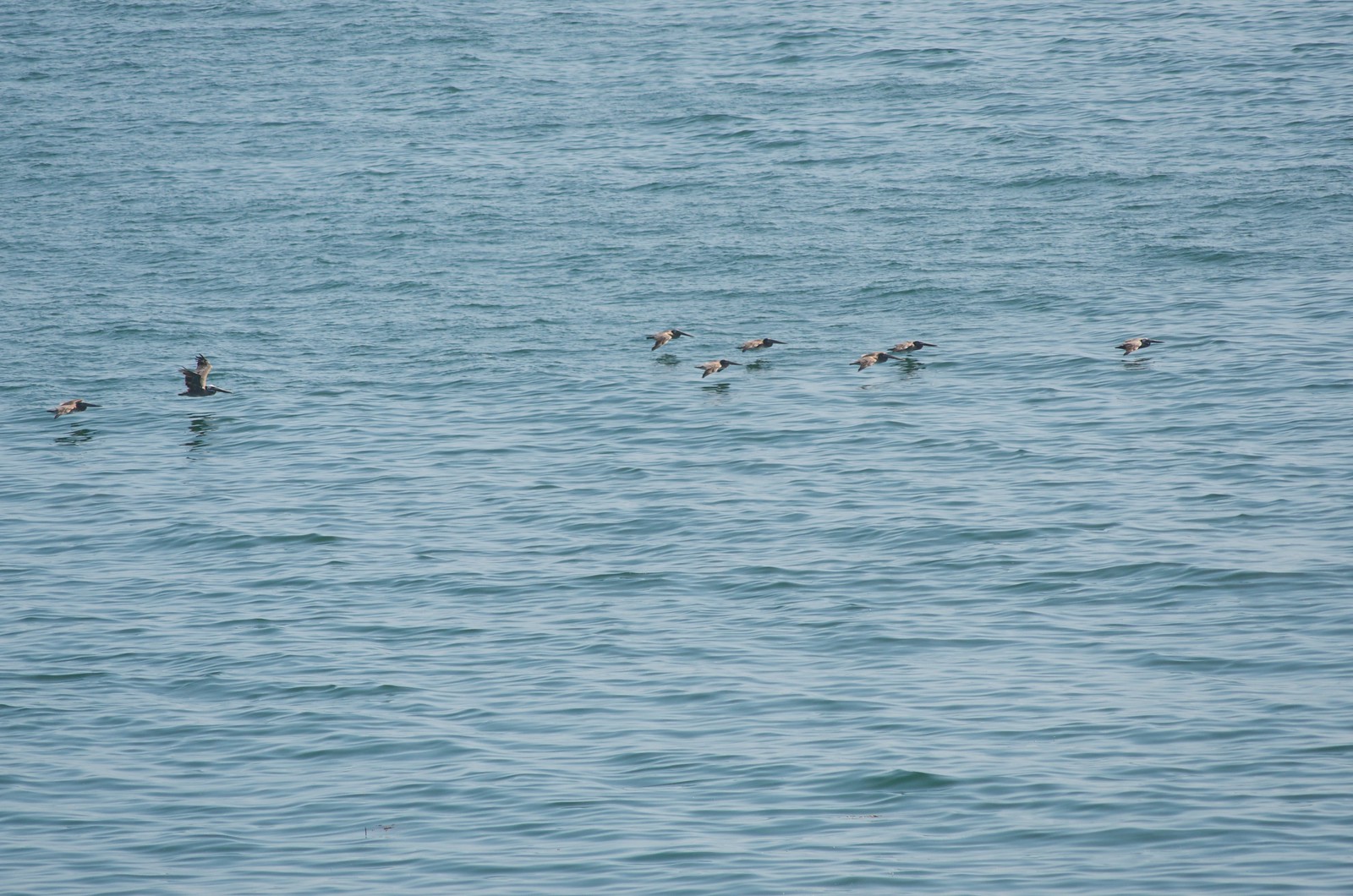
Pelicans skimming, Goleta, California: photo by Jon Sullivan, 28 July 2013

Petroleum pipeline signals future development off Mulholland Drive in the Santa Monica Mountains on the western edge of Los Angeles. The mountains contain the last semi-wilderness in Los Angeles County. Some 84 percent of the state's residents live within 30 miles of the coast, and this concentration has resulted in increased land use pressure. Of the 1,072 mile of mainland shoreline (excluding San Francisco Bay), 61 percent is privately owned: photo by Charles O'Rear (1941-), May 1975, from the DOCUMERICA series, an Environmental Protection Agency program to photographicallydocument subjects of environmental concern, compiled 1972-1977 (U.S. National Archives)

Oil covers rocks near Refugio state beach on Friday: photo by Justin Sullivan via the Guardian, 22 May 2015

A bird covered in oil spreads its wings as it sits on a rock near Refugio state beach on Friday: photo by Justin Sullivan via the Guardian, 22 May 2015
A bird covered in oil spreads its wings as it sits on a rock near Refugio State Beach in Goleta: photo by Justin Sullivan via Los Angeles Times, 21 May 2015
"Get oil out!
Workers at the Los Angeles Oiled Bird Care and Education Center work to clean an oil-covered pelican rescued from the spill at Refugio State Beach: photo by Irfan Khan via Los Angeles Times, 21 May 2015
Lesson of Santa Barbara oil spill: Leave petroleum in the ground: David Helvarg, Los Angeles Times, 22 May 2015
Memorial Day marks the beginning of high beach season, but there are miles of coastline near Santa Barbara that will be out of commission this weekend thanks to a pipeline oil spill.
This is how most offshore oil works: You drill miles off the coast, pump the oil onshore to be processed and pipe it along the coast. On Tuesday, an underground pipeline that runs between Gaviota and Refugio State Beach ruptured, and the oil followed gravity into a culvert and back out to sea.
More than 100,000 gallons of oil may have spilled, including an estimated 20,000 on the beach and in an oil slick in one of our nation's richest marine habitats. The pipeline company has apologized for the “inconvenience” all this will cause. What's particularly troubling is that compared with drilling rigs, pipelines are supposed to be the safe part of offshore oil operations.
California was the site of the world's first offshore drilling, from piers in Summerland in the late 19th century. By 1901, the San Jose Mercury News reported, “The whole face of the townsite is aslime with oil leakages,” and Santa Barbara banned oil piers. It took the federal government more than 60 years to convince the locals that drilling technology had advanced enough that spills would be a thing of the past. Then, in 1969, a Union Oil rig experienced a blowout and more than 3 million gallons of oil coated 35 miles of Santa Barbara County beaches six inches thick. Seabirds, fish and mammals died in droves.
The sight of dying, oil-covered birds in the same year that the polluted Cuyahoga River caught fire in Cleveland gave birth to the modern environmental movement. When President Nixon made an appearance in Santa Barbara, he was met by thousands of angry residents and the rallying cry “Get oil out!”
A pelican covered in oil sits on a beach about a mile west of Refugio State Beach on Wednesday, May 20: photo by Kenneth Song / Associated Press via Los Angeles Times, 20 May 2015
As the cleanup continues this week at Refugio State Beach, President Obama should make his own pilgrimage to the West Coast to check out the results of offshore drilling. He seems to have learned little from the BP blowout five years ago in the Gulf of Mexico. That disaster killed 11 workers and spilled 500 million gallons of oil, the result of gross negligence on the part of BP, according to a federal court ruling. The BP spill is still rippling through the gulf. On Wednesday, a new study reported that hundreds of bottlenose dolphins continue to die every year as a result of the spill.
Despite the steep costs of BP's negligence, the Obama administration proposes to open up new drilling sites along much of the Atlantic seaboard, and in the remote Arctic Ocean off Alaska, beginning in 2017.
Last week, in the largest citizen lobby for ocean conservation in U.S. history, nonpartisan delegations from 24 states held 163 meetings on Capitol Hill to oppose any new offshore drilling, among other issues. Along the Eastern Seaboard, more than 60 towns and cities, under Democratic and Republican leadership, have passed resolutions against oil surveys and drilling that might threaten their coastal economies and way of life.
On May 16 in Seattle, hundreds of protesters in kayaks surrounded Shell Oil's Arctic exploratory rig, the Polar Pioneer, hoping to keep it away from Alaska's Chukchi Sea during the brief upcoming Arctic summer. Coast Guard Commandant Paul Zukunft has pulled no punches about the risks of drilling and shipping in the Arctic, warning of a “black swan” incident -- a disaster of historic proportion -- if something like a major oil spill were to occur, because there would be no way to effectively respond to it.
On Wednesday, President Obama told the graduating class at the Coast Guard Academy in New London, Conn., that the science on climate change is clear and U.S. national security is threatened by global warming. What he didn't mention was the rest of the science, the part that indicates that leaving petroleum reserves in the ground -- and under the sea bed -- is the best way to avoid the most catastrophic effects of climate change.
The 1969 oil spill in Santa Barbara galvanized a movement and effectively ended additional drilling leases off California's coast. The 2015 spill is a reminder that the work of that movement is far from finished. The dangerous prospect of offshore leases will be a factor in the presidential primaries on the East Coast. The protests against dangerous drilling for Arctic oil will continue. It's past time to “Get oil out.”
David Helvarg is executive director of Blue Frontier, an ocean conservation and policy group. His latest book is "Saved by the Sea — Hope, Heartbreak and Wonder in the Blue World".
Workers at the Los Angeles Oiled Bird Care and Education Center work to clean an oil-covered pelican rescued from the spill at Refugio State Beach: photo by Irfan Khan via Los Angeles Times, 21 May 2015
![Oil spill on Santa Barbara County coast Oil spill on Santa Barbara County coast]()
Oil spill on Santa Barbara County coast. A "Beach Closed" sign is posted at Coal Oil Point in Isla Vista. Many state beaches have been closed in the area, but some people still made their way to the shore: photo by Genaro Molina / Los Angeles Times, 23 May 2015
A great blue heron hides behind a rock on the beach at Coal Oil Point in Isla Vista. The beach was closed because of the oil spill.: photo by Genaro Molina / Los Angeles Times, 23 May 2015
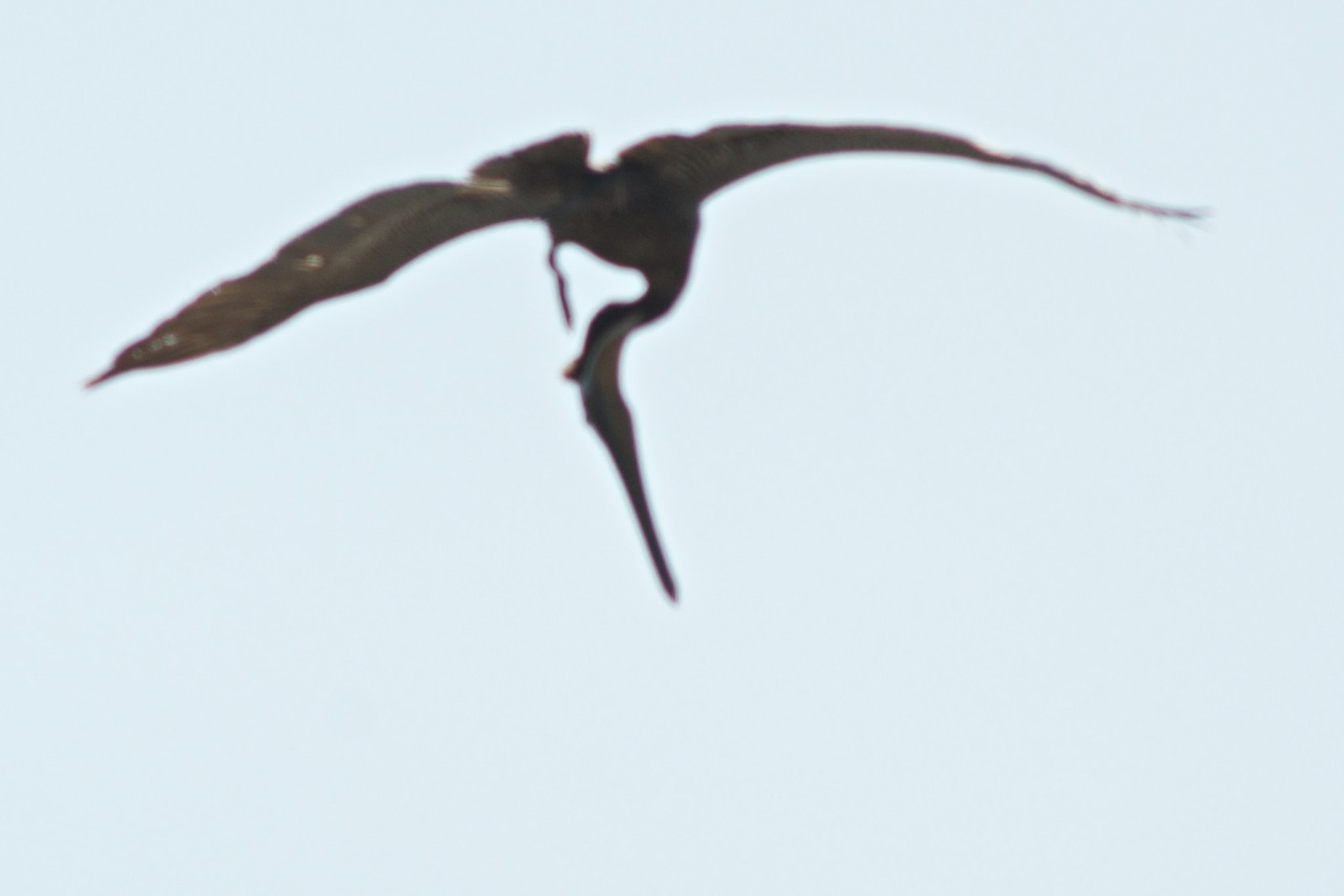
Brown Pelican in a dive, Goleta, California: photo by Jon Sullivan, 28 July 2013
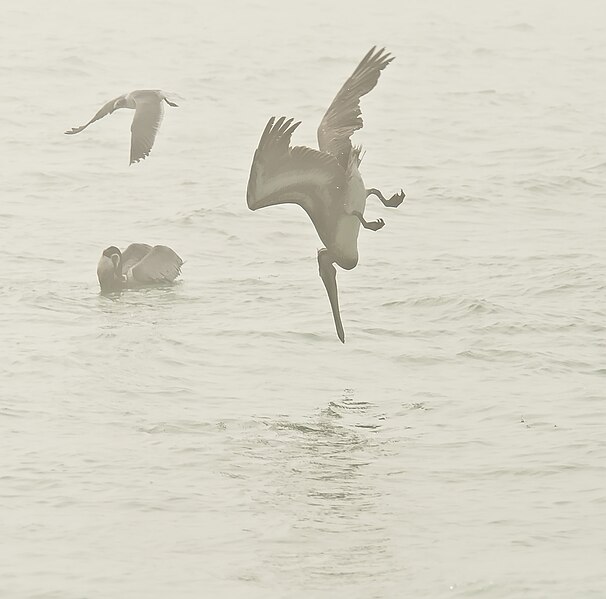
Brown Pelican in a dive: photo by Coveredinsevindust, 11 March 2014

